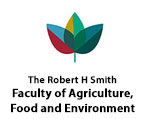Citation:
Abstract:
ABSTRACT Root axial conductance which describes the ability of water to move through the xylem, contributes to the rate of water uptake from the soil throughout the whole plant lifecycle. Under the rainfed wheat agro-system, grain-filling is typically occurring during declining water availability (i.e. terminal drought). Therefore, preserving soil water moisture during grain filling could serve as a key adaptive trait. We hypothesized that lower wheat root axial conductance can promote higher yields under terminal drought. A segregating population derived from a cross between durum wheat and its direct progenitor wild emmer wheat was used to underpin the genetic basis of seminal root architectural and functional traits. We detected 75 QTL associated with seminal roots morphological, anatomical, and physiological traits, with several hotspots harboring co-localized QTL. We further validated the axial conductance and central metaxylem QTL using wild introgression lines. Field-based characterization of genotypes with contrasting axial conductance suggested the contribution of low axial conductance as a mechanism for water conservation during grain filling and consequent increase in grain size and yield. Our findings underscore the potential of harnessing wild alleles to reshape the wheat root system architecture and associated hydraulic properties for greater adaptability under changing climate. This article is protected by copyright. All rights reserved.

